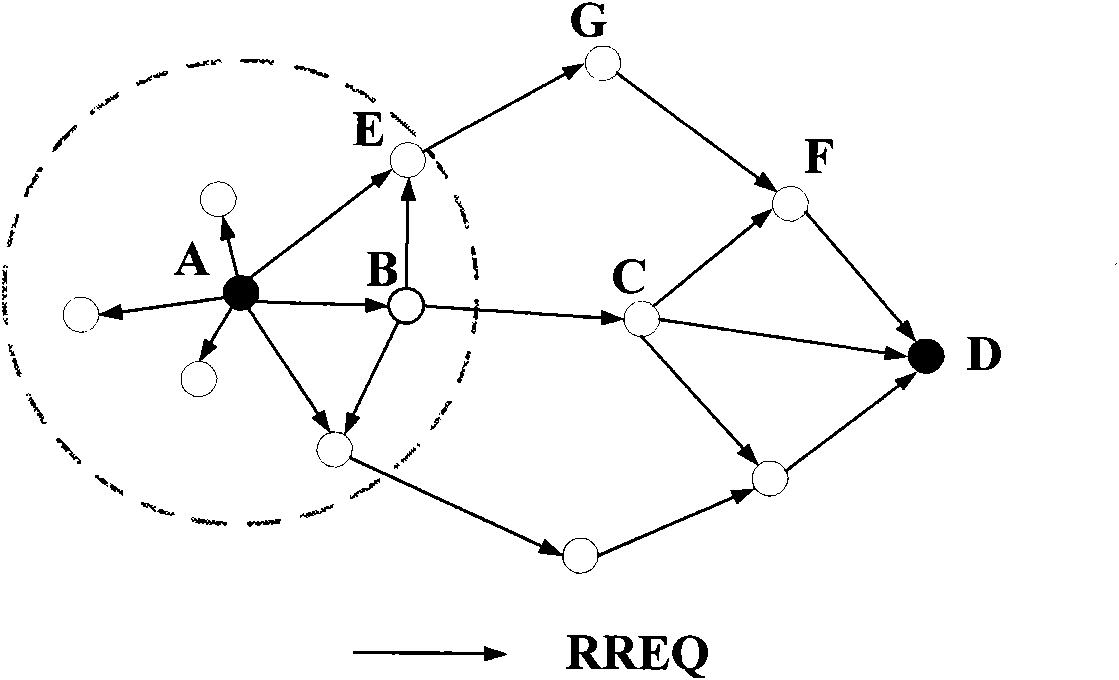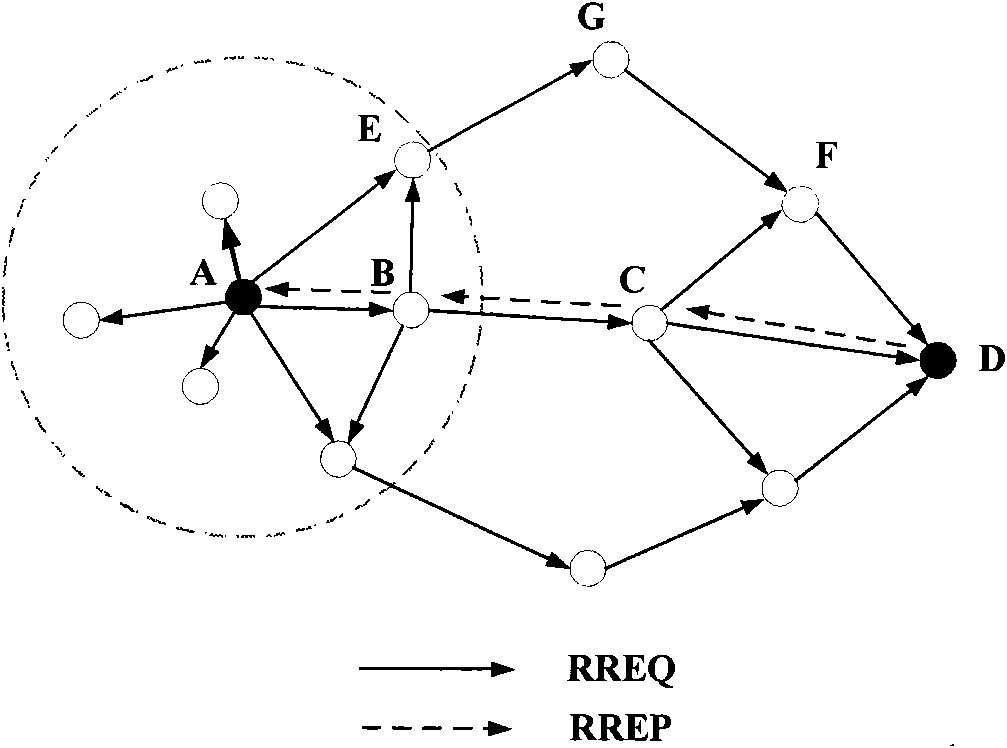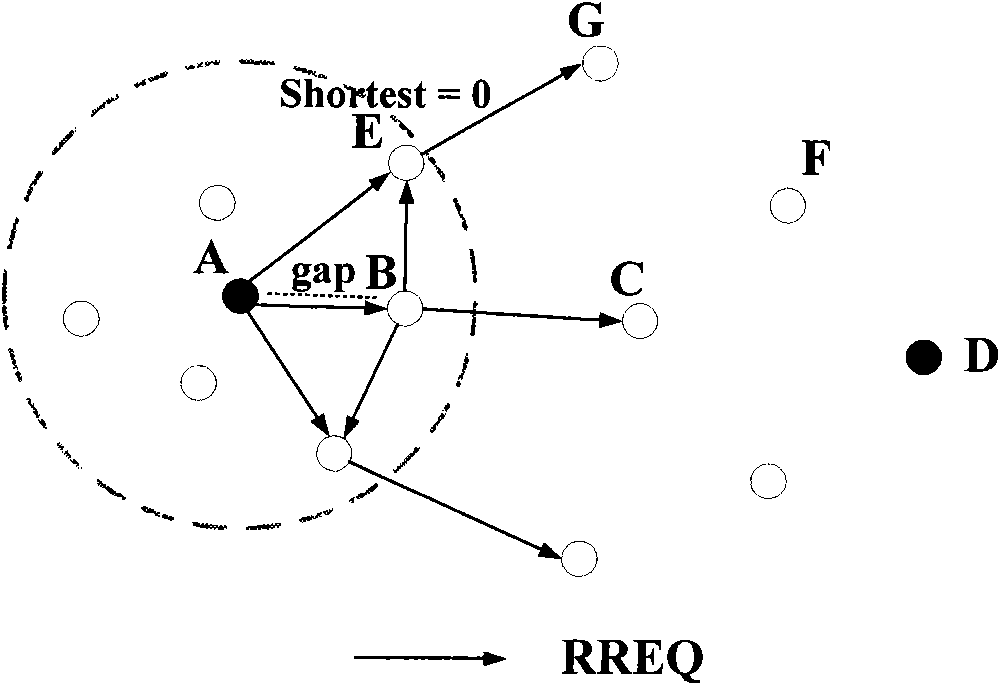Reactive routing protocol based on geographic information in wireless sensor network
A wireless sensor and geographic information technology, applied in wireless communication, network topology, electrical components, etc., can solve problems such as data inability to transmit, and achieve the effect of reducing overhead, extending network life, and improving performance
- Summary
- Abstract
- Description
- Claims
- Application Information
AI Technical Summary
Problems solved by technology
Method used
Image
Examples
Embodiment Construction
[0040] In view of the disadvantages of large overhead, low reliability and poor efficiency in the past geographical routing protocols, the present invention develops the protocol in a targeted manner, which can be divided into three parts: reducing the cost of routing discovery, finding the shortest path, and reliability of link breaks measure.
[0041] 1. Reduce the cost of route discovery: In order to reduce the cost of route discovery, the present invention only uses two kinds of data packets to complete the entire route discovery process: route request data packet and route reply data packet. The entire route discovery process can be divided into two stages: the route request stage and the route reply stage.
[0042] 1) Routing request stage: refer to figure 1 , when node A wants to transmit data information to node D, node A creates a routing request packet, sets the address of the destination node of the routing request packet as the address of node D, and sends it to the...
PUM
 Login to View More
Login to View More Abstract
Description
Claims
Application Information
 Login to View More
Login to View More - R&D
- Intellectual Property
- Life Sciences
- Materials
- Tech Scout
- Unparalleled Data Quality
- Higher Quality Content
- 60% Fewer Hallucinations
Browse by: Latest US Patents, China's latest patents, Technical Efficacy Thesaurus, Application Domain, Technology Topic, Popular Technical Reports.
© 2025 PatSnap. All rights reserved.Legal|Privacy policy|Modern Slavery Act Transparency Statement|Sitemap|About US| Contact US: help@patsnap.com



